Keuntungan dan Kekurangan Posisi Persalinan
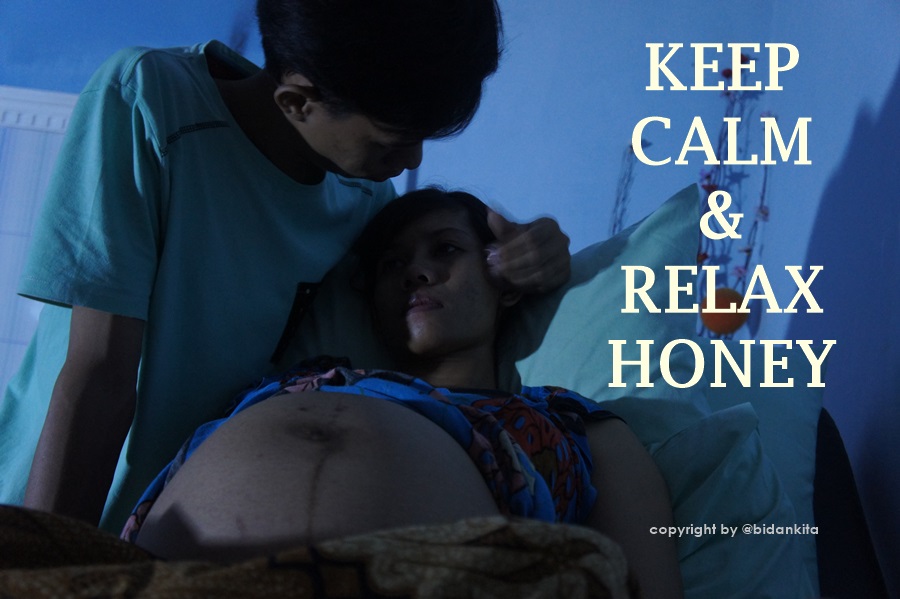
Posisi Lithotomy
Posisi lithotomy adalah salah satu posisi kelahiran yang paling umum, terutama di rumah sakit karena merupakan salah satu posisi paling mudah bagi penolong persalinan terutama apabila Anda menggunakan epidural.
Selama ini sebagian besar orang awam juga menganggap posisi ini posisi yang lazim dan paling baik digunakan karena di banyak tayangan TV yang pernah kita lihat selama ini, biasanya selalu menggunakan posisi ini.
Akhirnya banyak orang awam berasumsi bahwa posisi lithotomy digunakan karena telah terbukti menjadi posisi yang terbaik untuk ibu dan bayi, meskipun sebenarnya tidak. Karena sebenarnya posisi ini adalah posisi terburuk bagi persalinan, namun sayangnya posisi ini masih saja di digunakan di banyak rumah sakit.
Pastikan Anda membaca semua keuntungan dan kerugian dari posisi lithotomy sehingga Anda tahu dan akan menghindari posisi ini sebisa mungkin!
Posisi Persalinan: Berbaring / Posisi Lithotomy / Terlentang
Keterangan:
Berbaring telentang atau miring sedikit, kadang-kadang dengan kaki di sangga.
Keuntungan:
Tidak ada Keuntungan, Selain tidak akan mengganggu pemasangan kateter, infus, kateter epidural atau monitor internal janin.
Kekurangan:
1. Lithotomy posisi lebih menyakitkan daripada posisi lainnya (1,2)
2. Akses mudah ke perineum. (bidan sering melihat ini sebagai keuntungan, tapi jika Anda ingin menghindari tindakan episiotomy atau bahkan menghindari kejadian robekan perineum, maka hindari posisi ini)
3. Tidak membantu proses persalinan sama sekali.
4. Pembukaan panggul sempit atau tidak maksimalo dan tekanan tempat di tulang ekor sangat banyak
5. Ibu harus mengejan dengan melawan gravitasi dan ini meningkatkan lamanya atau panjang nya tahapan mengejan.
6. Meningkatkan tekanan pada perineum yang dapat meningkatkan robekan dan derajat episiotomi, terutama jika dibandingkan dengan posisi jongkok (3,4,5,6).
7. Gerakan ibu akan sangat dibatasi sehingga meningkatkan lamanya persalinan (7,8).
8. Meningkatkan risiko persalinan dengan vaccum ataupun Forcep (9,10,11).Â
9. Mengejan dalam posisi lithotomy meningkatkan peluang Anda untuk dilakukan episiotomy (12)
10. Posisi ini membuat tekanan pada pembuluh darah menuju rahim dan dapat membatasi aliran darah ke bayi. (13,14,15,16) ini dapat menurunkan detak jantung bayi yang menyebabkan Bidan Anda harus memantau Anda lebih lagi yang bahkan justru dapat lebih membatasi gerakan Anda.
11. Ini meningkatkan risiko bayi berada di posisi yang buruk (malpresentation)
12. Posisi ini meningkatkan risiko terjadinya distosia bahu (17)
image from here
Posisi Berbaring Miring
Posisi berbaring miring bisa sangat membantu jika Anda mencoba untuk menghindari posisi lithotomy.
Tips:
Lakukan Percobaan dengan mencoba berbagai variasi posisi ini untuk menemukan posisi mana yang paling nyaman.
Kaki atas dapat didukung atau disangga oleh pasangan Anda. Posisi miring ke kiri dapat digunakan dalam kala I dan dalam kala II persalinan.
Tapi, cobalah untuk tidak menggunakan posisi ini pada awal persalinan karena dapat memperlambat segalanya. Posisi miring dapat membantu jika proses persalinan berjalan terlalu cepat, biasanya terjadi pada ibu dengna jumlah anak lebih dari satu.
Keuntungan:
- Posisi ini dapat digunakan untuk beristirahat disela kontraksi
- Dapat digunakan dalam persalinan dengan epidural.
- Posisi ini membantu Anda untuk mengurangi tekanan dari organ-organ internal ke tali pusat yang memungkinkan pengurangan jumlah suplai oksigen yang mengalir ke bayi.
- Ini membantu untuk menjaga denyut jantung janin tetap stabil selama kontraksi.
- Menghemat energi si ibu
- Menguntungka bagi ibu yang memiliki tekanan darah rendah.
Kekurangan:
Bisa memperlambat persalinan jika tidak digunakan dengan tepat. Artinya pada kala I fase aktif posisi ini tidak akan membantu penurunan bagian terendah janin. Karena posisi ini tidak dapat memanfaatkan gaya gravitasi bumi
Berjongkok
Dari semua posisi persalinan yang dapat Anda pilih, untuk kala II posisi berjongkok ini mungkin adalah posisi yang terbaik. Jika Anda berharap untuk melahirkan secara alamim maka belajar bagaimana melakukan posiis jongkok adalah salah satu cara untuk mewujudkannya!
Bagaimana cara posisi jongkok? Posisi ini sama seperti posisi ketika Anda Buang Air Besar di WC Jongkok. Anda dapat mengatur posisi jongkok ini tanpa di sangga atau di dukung pasangan Anda, walaupun ini akan membutuhkan latihan terlebih dahulu dan kekuatan kaki yang lebih. Atau Anda bisa berjongkok dnegna didukung atau di sangga pasangan Anda. ilustrasi di sini benar-benar menunjukkan seberapa dekat Anda dengan pasangan Anda. Pastikan Anda membaca tips untuk beberapa info penting!
Tips:
– Yang terbaik Adalah menggunakan posisi ini pada tahap kala II Persalinan yaitu fase mendorong atau mengejan, karena dapat posisi melelahkan. Maka Anda mungkin akan butuh bantuan pasangan. Dan akan lebih baik lagi apabila Anda sudah latihan sejak kehamilan untuk meningkatkan kekuatan kaki. Yoga bisa menjadi pilihan latihan tersebut.
– Posisi Jongkok telah dikaitkan dengan tingkat robekan perinbeum yang lebih tinggi di beberapa penelitian, meskipun di penelitian lain hal ini juga di bantah. Karena sebenarnya yang membuat semakin banyak kejadian robekan perineum bukanlah posisi jongkoknya namun tehnik berjongkok yang digunakan. Misalnya, jika Anda jongkok dengan berat badan Anda tertumpu pada jari kaki, betis, paha, maka perineum dan vagina Anda ototnya akan semakin ketat/kencang. Sedangkan jika berat badan Anda tertumpu ada tumit Anda (mungkin dengan gulungan handuk di bawah tumit Anda untuk menyangga jika diperlukan ), otot perineum dan vagina akan lebih bisa rileks, dengan demikian dapat mencegah robekan perineum.
– Posisi Jongkok memperpanjang otot gluteus Anda, paha belakang dan quadriceps (paha) dan otot betis Anda. semua otot ini akan sangat membantu! Dengan demikian otot di wilayah perineum dan vagina akan lebih fleksibel.
Beberapa tips lain untuk posisi jongkok yang baik:
- Praktekan posisi jongkok dengan gulungan handuk di bawah tumit Anda sampai Anda bisa melakukannya dengan tumit yang menapak rata tanpa ada ganjalan gulungan handuk.
- Cobalah sambil memegang sebuah gagang pintu atau memegang pasangan Anda untuk membantu Anda mendapatkan posisi jongkok yang benar. Ketika memegang gagang pintu, pastikan bahwa garis antara pergelangan kaki dan lutut adalah vertikal. lutut Anda tidak harus jauh ke depan. Ini akan membantu Anda dapat menapakkan tumit ke lantai dengan rata.
- Pastikan tulang belakang Anda tidak melengkung, terutama punggung bawah, usahakan untuk tetap tegak atau lurus, jika tidak usahakan sedikit cekung. Untuk mencapai ini, Anda mungkin merasa seolah-olah bagian bawah Anda benar-benar mencuat.
Keuntungan:
1. Berjongkok membuka panggul hingga 30% dibandingkan dengan posisi berbaring (18)
2. Posisi Jongkok dilaporkan terasa kurang menyakitkan daripada posisi berbaring (19).
3. Posisi Jongkok dapat meluruskan ‘jalan lahir karena membantu tulang panggul untuk sejajar dengan jalan lahir,ini menyulitkan bagian terendah janin untuk turun ke jalan lahir.
4. Posisi Jongkok untuk melahirkan akan memanfaatkan gaya gravitasi bumi. Jika Anda berpikir untuk mengabaikan efek gravitasi Anda salah besar. Apakah Anda pernah punya pengalaman di mana Anda kesulitan buang air kecil ketika Anda berbaring dan Anda lebih mudah buang air kecil ketika Anda berdiri atau jongkok? Itulah efek GRAVITASI!
5. Posisi ini akan memperpendek tahap mengejan dalam persalinan (20,21,22,23).
6. Yang berarti bahwa oksitosin kurang diperlukan untuk mempercepat persalinan, sehingga dengan posisi ini akan mengurangi kejadian induksi dalam persalinan (19)
7. Posisi Jongkok juga mengurangi kebutuhan penggunaan forsep bila dibandingkan dengan posisi setengah-duduk (22).
8. Posisi Jongkok juga membantu untuk memperpanjang tubuh ibu sehingga dapat memberikan ruang yang lebih banyak kepada bayi untuk masuk ke posisi yang lebih baik.
9. Beberapa studi menyebutkan jongkok yang mencegah robekan perineum (20,23), meskipun beberapa menyebutkan bahwa tingkat robekan adalah sama (19) atau lebih tinggi (21,24) . Seperti yang disebutkan sebelumnya, kalau saya berpikir bahwa peningkatan robekan perineum adalah karena kurangnya dukungan, atau tehnik berjongkok yang salah.
10. Jongkok dapat menurunkan tingkat episiotomy (19,20,24)
Kekurangan:
Posisi ini Mungkin melelahkan, itulah sebabnya mengapa itu umumnya merupakan ide yang baik untuk menerapkannya hanya pada saat kala II atau saat mengejan saja.
Setengah-Duduk
image from here
Meskipun posisi duduk dan semi-duduk mungkin tampak serupa, namun sebenarnya ini sangat-sangat berbeda. Pastikan Anda terus membaca Artikel ini untuk mengetahui perbedaannya.
Posisi setengah duduk adalah posisi yang umumnya di lakukan di rumahsakit, rumah bersalin atau bidan praktek karena posisi ini juga sangat memudahkan bidan, dokter atau perawat untuk melakukan tindakan.
Keuntungan:
- Posisi ini dalam beberapa hal sedikit lebih baim dibandingkan dengan posisi berbaring terlentang atau lithotomy
- Posisi ini tidak akan mengganggu pada epidural, pemasangan kateter, infuse atau CTG
- Anda mendapatkan bantuan dari gaya gravitasi walaupun hanya sedikit
- Posisi ini dapat digunakan untuk istirahat
Kekurangan:
Kekurangan dari posisi setengah cukup banyak, hampir sama dengan kerugian dari posisi lithotomy atau berbaring. Beberapa sumber mengatakan posisi ini justru lebih buruk daripada posisi lithotomy karena memberikan tekanan sacrum sehingga membuat garis lengkung tubuh yang ini juga akan membatasi gerakan baby untuk menuruni jalan lahir. Masuk akal juga ya?
Kekurangan posisi setengah duduk:
- Lebih menyakitkan daripada posisi lainnya.
- Akses mudah ke perineum.
- Pembukaan panggul sempit dan tekanan di tailbone (tulang ekor) banyak
- Meningkatkan tekanan pada perineum yang meningkatkan resiko robek dan
- Gerakan wanita dibatasi.
- meningkatkan risiko forcep dan vacum.
Posisi Duduk
Keinginan untuk melahirkan dengan duduk tentu bukan pilihan persalinan aktif. Posisi duduk adalah posisi kedua terbaik setelah posisi jongkok untuk persalinan kala II. Posisi duduk juga memiliki beberapa manfaat pada kala I persalinan, seperti mempercepat dan memperlancar persalinan.
Posisi duduk ini ini bisa dilakukan dengan Duduk tegak di kursi, di toilet, atau pada bola persalinan. Anda bisa menghadap maju atau mundur, tetapi Anda mungkin akan condong ke depan sedikit. Duduk di toilet terasa canggung namun ini cukup efektif!
Ini juga termasuk duduk di paha suami, atau Anda bisa melahirkan dengan duduk di bangku melahirkan, yang berarti bahwa dalam beberapa hal mungkin dasarnya sama dengan berjongkok.
Tips:
- Dapat digunakan dalam kala pertama dan kedua persalinan.
- Ini tidak sama dengan duduk di sofa yang membuat curva C di tulang belakang. Duduk di toilet atau bola persalinan akan lebih membantu.
- Jika Anda ingin melahirkan dengan posisi duduk maka anda dapat membuka pelvis Anda lebih lebar dengan mengangkat kaki Anda dengan menempatkan sesuatu seperti gulungan handuk di bawah mereka.
- Jika Anda bersandar ke depan, gunakan bantal untuk I memberkenyamanan ekstra.
- Cobalah duduk dengan satu kaki diatas; posisi asimetris bisa menghilangkan rasa sakit dan membantu memindahkan bayi ke posisi yang baik.
Keuntungan:
1. Gravitasi bumi membantu yang dapat mengurangi lamanya persalinan (28,29).
2. Duduk adalah posisi yang cukup santai (28,29)
3. Duduk juga membuka panggul.
4. Duduk menghadap dan membungkuk ke depan bisa membantu meringankan nyeri punggung pada persalinan yang umumnya terjadi ketika bayi menghadap ke perut Anda atau posisi bayi posterior
5. Dengan posisi duduk diatas bola Anda dapat bergoyang maju mundur membetuk angka delapan maupun melingkar dan ini dapat membantu memindahkan bayi ke posisi yang lebih baik.
6. Duduk di toilet dapat membantu memperlancar persalinan terutama jika Anda mengalami ketuban pecah dini. Ini juga membantu Anda untuk memastikan bahwa kandung kemih Anda kosong untuk memungkinkan dilatasi/pembukaan jalan lahir lebih cepat.
Kekurangan:
– Saya tidak menemukan kekurangan pada posisi duduk
Berlutut
Berlutut adalah salah satu pilihan posisi persalinan yang lain. Beberapa proses persalinan yang mengalami kesulitan akan dilakukan perubahan posisi ibu dan proses perubahan posisi dapat membantu persalinan dalam hal ini dapat membuat persalinan lebih cepat dan membantu bayi bergerak menuruni jalan lahir, dan dengan demikian meningkatkan kesempatan Anda memiliki persalinan normal dan alami
Tips:
– Jika di rumah sakit Anda dapat berlutut di tempat tidur dan menempatkan lengan Anda di atas kepala tempat tidur yang telah diangkat ke ketinggian yang sesuai dengan keinginan Anda
– Bergoyang-goyang, goyang, membuat lingkaran di pinggul atau memiringkan panggul dalam posisi ini juga dapat membantu menghilangkan rasa sakit dan membimbing bayi ke posisi yang lebih baik.
– Pastikan Anda berada pada permukaan yang nyaman.
– Berlutut dengan satu lutut diangkat juga dapat membantu memindahkan bayi ke posisi yang lebih baik.
– Ini bisa sulit jika Anda menggunakan epidural.
Keuntungan:
1. Bersandar ke depan dalam posisi ini membantu untuk meringankan ibu dari rasa sakit persalinan.
2. Memungkinkan pasangan untuk melakukan pijatan ataupun kompres hangat pada punggung Anda.
3. Mengurangi tekanan pada perineum sehingga robekan perineum jarang terjadi.
Kekurangan:
Saya tidak menemukan kekurangan pada posisi ini
Merangkak

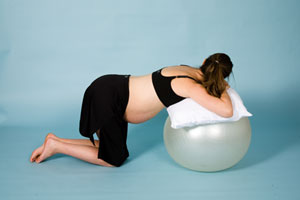
Tips:
Ketika Anda memilih posiis merangkak, yang terpenting adalah menjaga agar lengan vertical dengan bahu Anda tidak jauh k belakang atau lkedepan dan tidak lebih lebar dari bahu Anda sehingga tidak membuang energy Anda, namun memungkinkan tubuh Anda untuk beristirahat di lengan Anda. Untuk kala dua tahap akhir Anda perlu memperluas panggul Anda dengan membuka lutiut. Yang penting cari posisi yang paling nyaman menurut Anda. Beberapa juga menggunakan variasi dengan bersandar ke meja atau pinggiran tempat tidur.
Keuntungan:
1. Membantu meringankan rasa sakit (30,31)
2. Lebih sedikit resiko robekan perineum
3. Posisi ini sangat bagus untuk bayi besar
4. Dapat membantu jika terjadi prolaps tali pusat untuk mencegah tali pusat semakin menumbung
Berdiri Tegak
Posisi berdiri tegak untuk melahirkan mungkin adalah yang paling kurang dimanfaatkan dari semua posisi lahir, terutama mengingat bahwa para praktisi penolong persalinan tidak bisa fleksibel ketika menolong. Namun ketika diberi pilihan, banyak wanita memilih untuk tetap tegak ketika bersalin, Posisi berdiri tegak merupakan posisi yang baik karena ada banyak manfaat! Salah satu manfaat terbesar adalah bahwa Anda dapat bergerak dengan mudah, yang sangat membantu dalam mempercepat persainan dan membantu bayi dalam posisi yang baik.
Bebeberapa variasi posisi tegak adalah dengan berdansa bersama pasangan, berdiri saling berhadapan dengan menggoyang maju mundur dan melingkar untuk memudahkan bagian terendah janin segera turun ke jalan lahir. Dan posisi ini sangat baik untuk psosi pada saat kala I. selain itu kadang posisinya dengan tegak berdiri dan satu kaki diangkat untuk membantu melebarkan panggul.
Keuntungan;
1. Ini adalah posisi yang mudah untuk bergerak dan gerakan tersebut akan membantu bayi bergerak turun dan membantu ibu untuk menjaga napasnya tetap mantap.
2. posisi tegak untuk kelahiran menggunakan besar gravitasi!
3. Membuatnya lebih mudah bagi orang lain untuk memijat
4. Membuat kontraksi lebih efektif (33)
5. Mempercepat tahap pertama persalinan. (31,32,33)
6. Berdiri dalam posisi asimetris juga dapat membantu bayi bergerak ke posisi yang baik.
7. Mengurangi permintaan untuk obat sakit epidural atau lainnya . (31,32,33)
Jadi sekarang Anda tahu apa posisi kelahiran yang baik dan kurang baik , yang menguntungkan maupun merugikan. Pastikan untuk menemukan posisi persalinan yang terbaik untuk Anda dan bayi Anda.
Selamat mencoba
Salam Hangat
Bidan Kita
Referensi:
1. De Jonge A, Teunissen TA, & Lagro-Janssen AL. 2004. Supine position compared to other positions during the second stage of labor: a meta-analytic review. Journal of Psychosomatic Obstetrics & Gynecology.25(1):35-45.
2. Gupta JK, & Hofmeyr GJ. 2004. Position for women during second stage of labour. Cochrane Database Syst Rev . 2004(1):CD002006.
3. Terry RR, Westcott J, O’Shea L, & Kelly F. 2006. Postpartum outcomes in supine delivery by physicians vs nonsupine delivery by midwives. Journal of the American Osteopathic Association . 106(4):199-202.
4. Nasir A, Korejo R, & Noorani KJ. 2007. Child birth in squatting position.Journal of the Pakistan Medical Association . 57(1):19-22.
5. Golay J, Vedam S, & Sorger L. 1993. The squatting position for the second stage of labor: effects on labor and on maternal and fetal well-being. Birth . 20(2):73-8.
6. Bhardwaj, N, Kukade, JA, Patil, S, & Bhardwaj, S. 1995. Randomised controlled trial on modified squatting position of delivery. Indian Journal of Maternal and Child Health . 6(2):33-39.
7. Allahbadia GN, & Vaidya PR. 1993. Squatting position for delivery.Journal of the Indian Medical Association. 91(1):13-16.
8. Lawrence A, Lewis L, Hofmeyr GJ, Dowswell T, & Styles C. 2009. Maternal positions and mobility during first stage labour. Cochrane Database Syst Rev. 15(2):CD003934.
9. Roberts CL, Algert CS, Cameron CA, & Torvaldsen S. 2005. A meta-analysis of upright positions in the second stage to reduce instrumental deliveries in women with epidural analgesia. Acta obstetricia et gynecologica Scandinavica . 84(8):794-8.
10. De Jonge A, Teunissen TA, & Lagro-Janssen AL. 2004. 2004. Supine position compared to other positions during the second stage of labor: a meta-analytic review. Journal of Psychosomatic Obstetrics & Gynecology .25(1):35-45.
11. Nasir A, Korejo R, Noorani KJ. 2007. Child birth in squatting position.Journal of the Pakistan Medical Association . 57(1):19-22.
12. Bodner-Adler B, Bodner K, Kimberger O, Lozanov P, Husslein P, & Mayerhofer K. 2003. Women’s position during labour: influence on maternal and neonatal outcome. Wien Klin Wochenschr. Oct 31;115(19-20):720-3.
13. Kerr MG, Scott DB, Samuel E. 1964. Studies of the inferior vena cava in late pregnancy. British Medical Journal. 1:532—3 .
14. Clark SL, Cotton DB, Pivarnik JM, et al. 1991. Position change and central hemodynamic profile during normal third-trimester pregnancy and post-partum. American Journal of Obstetrics and Gynecology . 164: 883—7.
15. Danilenko-Dixon DR, Tefft L, Cohen RA, et al. Positional effects on maternal cardiac output during labor with epidural analgesia. American Journal of Obstetrics and Gynecology . 175: 867—72.
16. Chen, GY, Kuo, CD, Yang, MJ, Lo, HM, & Tsai, YS. 1999. Comparison of supine and upright positions on autonomic nervous activity in late pregnancy: the role of aortocaval compression. Anaesthesia . 54(3):215-219.
17. Caldeyro-Barcia, R. qtd in O’Mara, P, Facciolo, J, and Ponte, W. 2003.Mothering Magazine’s Having a Baby, Naturally: The Mothering Magazine Guide to Pregnancy and Childbirth . Simon and Schuster.
18. Ehrstrom, C qtd in McKay, S (ed.) ICEA review. 2(1978)1.
19. Bodner-Adler B, Bodner K, Kimberger O, Lozanov P, Husslein P, & Mayerhofer K. Women’s position during labour: influence on maternal and neonatal outcome. Wiener Klinische Wochenschrift . 2003 Oct 31;115(19-20):720-3.
20. Golay J, Vedam S, & Sorger L. The squatting position for the second stage of labor: effects on labor and on maternal and fetal well-being. Birth. 1993 Jun;20(2):73-8.
21. Allahbadia GN, Vaidya P R. Squatting position for delivery. Journal of the Indian Medical Association . 1993 Jan;91(1):13-6.
22. Gardosi J, Hutson N, B-Lynch C. Randomised, controlled trial of squatting in the second stage of labour. Lancet . 1989 Jul 8;2(8654):74-7.
23. Bhardwaj N, Kukade JA, Patil S, & Bhardwaj S. Randomised controlled trial on modified squatting position of delivery. Indian Journal of Maternal and Child Health . 1995 6(2):33-39.
24. Shorten A, Donsante J, & Shorten B. Birth position, accoucheur, and perineal outcomes: informing women about choices for vaginal birth. Birth. 2002 Mar;29(1):18-27.
25. Kelly FW, Terry R, & Naglieri R. A review of alternative birthing positions.Journal of the American Osteopathic Association . 1999 Sep;99(9):470-4.
26. Association of Women’s Health, Obstetric, & Neonatal Nursing. 2008.Nursing care and management of the second stage of labor (2nd ed).Washington, DC: AWHONN.
27. de Jong PR, Johanson RB, Baxen P, Adrians VD, van der Westhuisen S, & Jones P W. Randomised trial comparing the upright and supine positions for the second stage of labour. British Journal of Obstetrics and Gynaecology. 1997 104:567-571.
28. Lawrence A, Lewis L, Hofmeyr GJ, Dowswell T, & Styles C. Maternal positions and mobility during first stage labour. Cochrane Database Syst Rev . 2009 Apr 15;(2):CD003934.
29. Chen SZ, Aisaka K, Mori H, & Kigawa T. Effects of sitting position on uterine activity during labor. Obstetric Gynecology. 79(1987):67-73.
30. Hunter S, Hofmeyr GJ, & Kulier R. Hands and knees posture in late pregnancy or labour for fetal malposition (lateral or posterior). Cochrane Database Syst Rev. 2007 Oct 17;(4):CD001063.
31. Stremler R, Hodnett E, Petryshen P, Stevens B, Weston J, & Willan AR.Randomized controlled trial of hands-and-knees positioning for occipitoposterior position in labor. Birth . 2005 Dec;32(4):243-51.
32. Kelly FW, Terry R, & Naglieri R. A review of alternative birthing positions.Journal of the American Osteopathic Association . 1999 Sep;99(9):470-4.
33. Terry RR, Westcott J, O’Shea L, & Kelly F. Postpartum outcomes in supine delivery by physicians vs nonsupine delivery by midwives. Journal of the American Osteopathic Association. 2006 Apr;106(4):199-202.
34. Flynn AM, Kelly J, Hollins G, & Lynch PF. Ambulation in labour. British Medical Journal . 1978 2:591-593.
35. Schwartz R, Diaz AG, Fescina R, & Caldeyro-Barcia R. 1979. Latin American Collaborative Study on Maternal Posture in Labor. Birth and the Family Journal. 6(1):22-31.


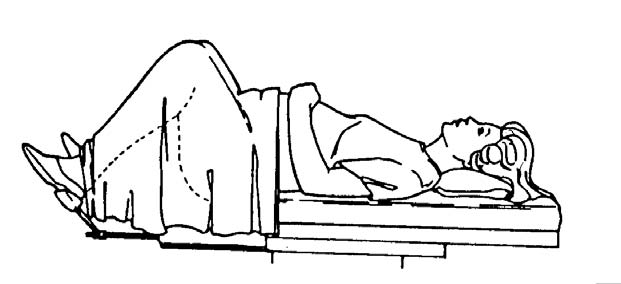
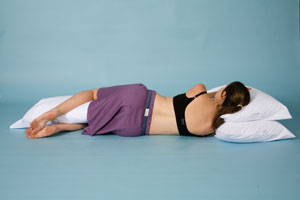
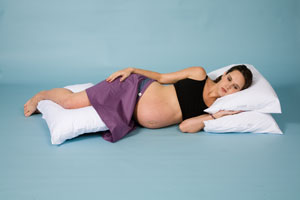
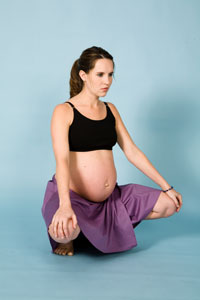
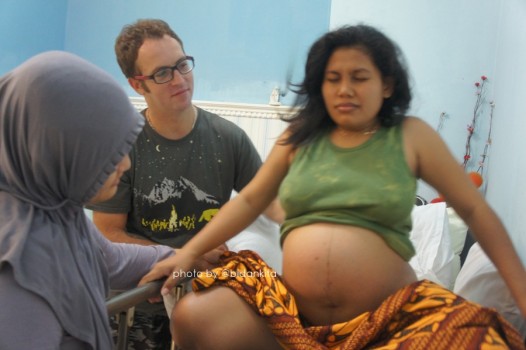
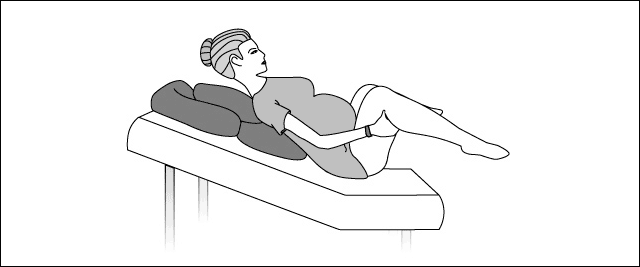
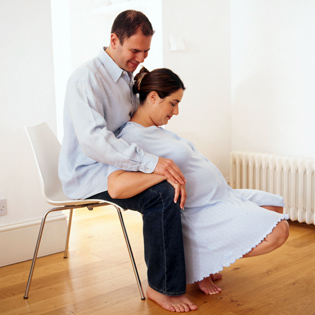
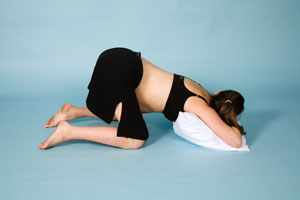





One Comment